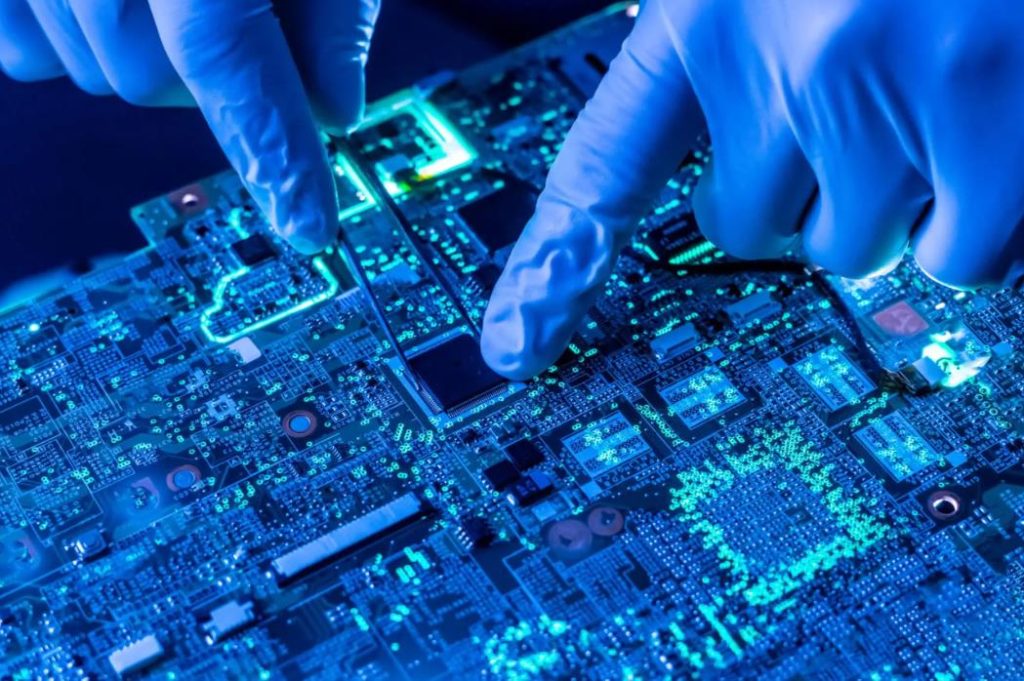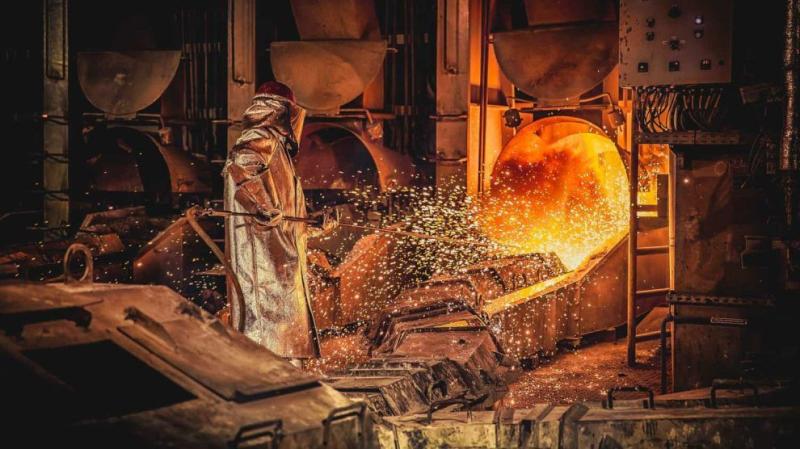
The semiconductor industry plays a very important role in the dynamically changing world of technology, helping new ideas to grow in many fields. This article explores in detail complex factors affecting the situation in the semiconductor market and uncovers various forces driving it forward. We analyze the main things affecting the growth, trends, and challenges of the semiconductor industry from technology improvement to global supply chain issues.
1. Technological Advancements and Innovation:
The semiconductor market is inextricably linked to the continuing growth in technology. Following Moore's Law, the industry works tirelessly to not only improve chip performance, but to make the chips smaller and cheaper. New technologies, such as 5G, AI, and IoT, have driven a large demand for higher and more effective semiconductors.
Innovation plays an important role in the semiconductor industry. Companies invest a lot of money in research and development to make a new material, design, and manufacturing process. The effort towards miniaturization of transistors, adding more features, and improving energy efficiency keeps the industry moving forward.
The world of semiconductors is shifting in a direction where new materials, such as gallium nitride and silicon carbide, are starting to play an important role. These materials provide better performance and consume energy more efficiently, which is a key requirement for making electronic devices more environmentally friendly.
2. Global Supply Chain Challenges:
Recent upheavals in the semiconductor supply chain have demonstrated how easily global events can damage an otherwise resilient industry. The COVID-19 pandemic showed the weaknesses in the supply chain manufacturing process and subsequently resulted in shortages of key semiconductor parts. Political tensions and natural catastrophes have raised a red flag for companies to reconsider and alter supply chain strategies.
Companies and governments are examining ways to manufacture semiconductors locally to become more robust and independent of particular regions or suppliers. Building a more resilient and reliable supply chain has become an important objective for the sector.
Supply chain issues in semiconductors are forcing companies to rethink how they manage inventories. Now, companies are managing inventory more flexibly and rapidly to handle uncertainties better, while responding to market changes more effectively.
3. High Demand Across Industries:
All these semiconductors find wide applications in consumer electronics, automobiles, health facilities, and factories. Increased smart device penetration, increased electric vehicle penetration, and advances in medical technology have brought up a huge demand for semiconductor solutions. Car industries experience the largest transformation with regard to electric cars and self driving automobiles, so increasing demand for advanced semiconductor technologies.
This resulted in a big demand and supply gap, hence scarcity and increased waiting time for semiconductor products. Manufacturing capabilities are being stretched to the limit by the manufacturers to keep up with the ever-growing needs of diversified industries.
It's not just the ordinary electronics that demand more semiconductors; rather, emerging technologies like AR and VR are also in demand. These technologies require advanced performance semiconductor chips, making the demand even higher for the innovation of more new production.
4. Rising Complexity and Cost of Manufacturing:
While technology improvements often enable better performance and add more capabilities, they also complicate the semiconductor manufacturing process and increase cost. This requires broad research and development costs as well as investment in state of the art production facilities in order to take process sizes down to 7nm and even smaller, making it possible for a select few companies to remain on the leading edge of semiconductor production.
Increasing complexity causes smaller companies problems in the market, leading to more mergers and acquisitions. Working together and creating partnerships is also very significant for companies to share resources and knowledge, thus guaranteeing that semiconductor manufacturing will remain sustainable.
Increasingly, the cost of product manufacturing has driven greater interest in developing processes to yield a higher quality and lower cost production. New methods, such as extreme ultraviolet lithography, are under development and being used in order to advance accuracy and reduce costs, enabling the competitive existence of industry in the global market.
5. Regulatory and Environmental Factors:
International rules to be followed, taking the environment into concern, are a must for the semiconductor industry. Accessing the market means companies need to follow these international rules, and that requires understanding complicated laws that make sure their products will meet global standards.
The attention has increased due to environmental issues such as hazardous materials and electronic waste. Firms, on the other hand, invest in research funds in creating environmentally friendly semiconductor materials and processes, partnering with global efforts toward a greener technology environment.
Other key factors that have become important in this regard are stricter regulations related to data privacy and security. Compliance with such regulations will give semiconductor manufacturers market access and consumer confidence, as data protection becomes increasingly crucial.
Conclusion:
The semiconductor market is very important to technology and plays a significant role in many industries. Any news that might be happening in this market should be well understood by all parties involved, from the manufacturing to investors and consumers. In an ever changing industry, the key will be finding a balance between new ideas and a solid supply chain system. It should be relevant to global demand, management of manufacturing challenges, and adherence to the rules and environmental standards with a view to providing growth and building a semiconductor powerhouse. Ongoing development of the semiconductor industry opens a future based on creativity, collaboration, and adaptability, leaving footprints in the history of technological developments.
Trending Posts

Global Silver Nanoparticles Market
The global silver nanoparticles market was valued at $2.08 billion in 2020, and is projected to reach $4.1 billion by 2027, growing at a CAGR of ~17%

LNG Bunkering – Here is something you must know!
In the current scenario of growing pollution, companies are trying to adapt more and more sustainable approach that not only gives eco-friendly result

The Basic Pension Comes - Federal Cabinet Decides On the Pension Supplement
Financial security in old age is an issue that is causing stomach pains for more and more people in Germany. Low-wage earners fear the elderly. The ba

The Future of Artificial Intelligence
In recent years, the field of artificial intelligence (AI) has witnessed unprecedented growth and transformative advancements. As AI technologies

Sailing into the future with Autonomous Ships
Autonomous Vehicles (AVs) are the uproar of this era. After airways, thanks to the companies like Tesla, that people are now getting used to see drive

Rising Demand For Uninterrupted Power Supply Is Expected To Drive The Power Rental Market
Todays world is totally reliant on electric power. There are many things which are not manageable without electricity. Power rental is a concept where

Rapidly growing IT industry coupled with the trend of bringing your own device (BYOD) is expected to provide new opportunities for growth of Cloud Collaboration
Cloud collaboration is the process of sharing and co-authoring the computer-based work through cloud technology

Factcheck on UV Disinfection for COVID-19
Many regulatory authorities and bodies believe that UV disinfection technologies can play a role in a multiple barrier approach to reducing the transm

The Global Ventilator Market Grows at a CAGR of 7.75 %
The Global Ventilator Market, which was at $688 million in the year 2016, is about to double by the year 2025, and reach a value of $1,347 million. Th

Vaccination: Vaccination Against Measles is Now Mandatory in Germany
The subject of compulsory vaccination has always heated peoples minds and caused emotionally charged discussions. The latest law in this area - the ob
Recent Posts

Growth and Future Trends of the Global In-Line UV-Vis Spectroscopy Market
In-line UV-Vis spectroscopy is a powerful analytical tool widely adopted in various industries for real-time monitoring of chemical and biological processes. This market is experiencing robust growth due to its applications in pharmaceutical.

Understanding the Growth Dynamics of the Premium Luggage Market
The market for premium luggage has grown massively over the years. This is attributed to several factors, including a change in consumer preference, increase in disposable incomes, and an overall rise in international travel.

Global Potassium Sorbate Market: Growth and Forecast
The Global Potassium Sorbate Market has gained significant traction due to the rising demand for preservatives across various industries, especially in food and beverages. Potassium sorbate, a salt of sorbic acid.

Global Venturi Masks Market Growth and Forecast
Venturi masks, also known as air-entrainment masks, play a crucial role in delivering a precise oxygen concentration to patients, particularly those suffering from chronic respiratory conditions such as COPD (Chronic Obstructive Pulmonary Disease).

Global Venous Thromboembolism (VTE) Therapeutics Market: Overview, Growth, and Forecast
Venous thromboembolism (VTE) is a critical medical condition including deep vein thrombosis and pulmonary embolism. In fact, it is one of the preventable causes of death in the hospital environment. It has experienced a substantial upsurge.

Global Vein Illumination Device Market: Growth and Forecast
The global vein illumination device market is experiencing significant growth, Due to a growing demand for minimally invasive procedures and an increase in chronic diseases, not to mention development in medical technology.

Global Vasculitis Treatment Market: Growth and Forecast
Vasculitis represents a group of disorders involving inflammation of blood vessels. It can affect parts of the body such as the skin, kidneys, lungs, and joints, and without proper treatment it may cause severe morbidity.

Global Fired Heaters Market: Growth and Forecast
The global market for fired heaters is growing at a rapid pace due to increased demand from major industries such as the oil & gas, chemical, and petrochemical sectors. Fired heaters are among the most crucial components of process heating systems.

Global Gas Flares Market Growth and Forecast
The growth in oil and gas production, environmental regulations, and a need for an effective waste gas management system are driving the global gas flares market. Gas flares are a crucial equipment in the oil and gas industry.

Global Steam Reformers Market: Growth, Trends, and Forecast
The steam reformers market is witnessing significant growth due to increased demand for hydrogen in industries like chemicals, refining, and fertilizers.
